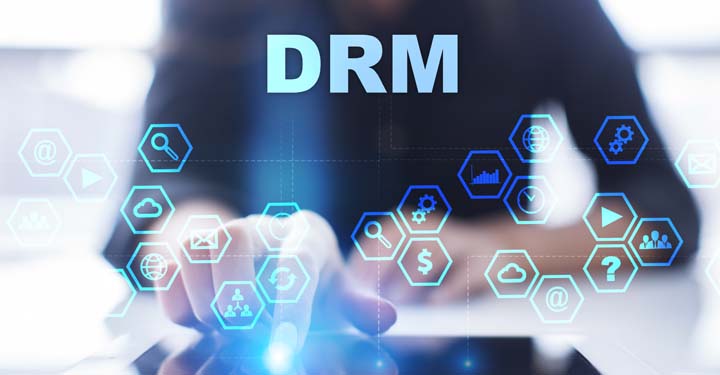DRM, or digital rights management, is a digital licencing system that enables content copyright owners to monitor how and by whom their work is used and to restrict the methods in which the content can be duplicated or propagated by end users. The digital rights management (DRM) system preserves the copyrights of electronic media and guarantees that publishers will receive proper compensation for the content they create. Over-the-top (OTT) services like Netflix, Hulu, and Amazon Prime employ it, as do other industry leaders in the field of Video DRM, such as Microsoft’s PlayReady, Google’s Widevine, and Apple’s FairPlay. Amazon Prime also uses Widevine. The digital rights management (DRM) technology helps to manage and protect digital content across a variety of smart devices, including desktop computers, smartphones, smart TVs, gaming consoles, ebook readers, casting sticks, and other similar electronic gadgets. For instance, Netflix employs several different digital rights management (DRM) systems, including Microsoft’s PlayReady DRM, in addition to Video watermarking, in order to prevent any illegal content leakage and restrict the number of users who can access a particular type of premium digital content.
DRM Content Packaging (en anglais)
The digital rights management (DRM) protocol used in media content packaging encrypts and safeguards the original content against unauthorised usage. DRM content packaging is a means of encrypting the source content into other formats, such as Dynamic Adaptive Streaming over HTTP (DASH) or HTTP Live Streaming (HLS). It is often referred as as MPEG-DASH due to the fact that the Moving Picture Expert Group (MPEG) was the organisation that developed the DASH format. When it comes to encrypting digital content of these formats, the Advanced Encryption Standard (AES) has emerged as the de facto standard encryption method. The content that has been encrypted is sent to the device that the final user will be using. For the consumer to be able to play back the content, they will need to have a Digital Rights Management (DRM) licence that includes the encryption key that was granted from a DRM licence server. This procedure is managed by a multi-DRM service.
The AES-128 encryption standard uses a block size of 128 bits for each and every one of its blocks. It is widely acknowledged as a robust encryption standard; in fact, the United States intelligence organisation known as the National Security Agency (NSA) recommends using this standard when encrypting top-secret communication. When encrypting video files, video protection methods such as HLS, Adobe’s Real Time Messaging Protocol, and DRM-protected content all employ AES-128 as their encryption algorithm of choice. Leaders in the industry are of the opinion that data encrypted using the AES-128 standard cannot be broken into if the hacker does not have access to the decryption key. Due to the fact that AES is a symmetric key algorithm, the key that is used to encrypt and decode content is the same.
The HLS technique encrypts individual video files using blocks as the unit of encryption. The cipher text from the prior block is used to encrypt the data in each subsequent block. The video file is safeguarded by using a chain cypher approach, which also makes certain that the client device decrypts the data for each block individually.
The AES algorithm is a reliable method for encrypting video files; however, it does have a security flaw in that it generates an insecure decryption key. This key may or may not be stored in a secure location on the client device, and the end user may also choose to disclose it to other individuals who are not authorised to access it. OTT players are aware of this gap in the market, and as a result, they safeguard their content with a multi-DRM solution that assures the client receives their licence key in a safe and secure manner. For this reason, the OTT sector absolutely needs to have access to a powerful multi-DRM software as a service that can manage DRM licences that have been provided by industry leaders on a worldwide scale, such as Widevine.









